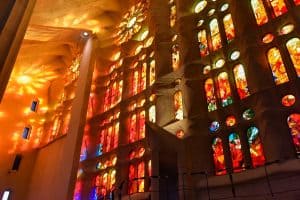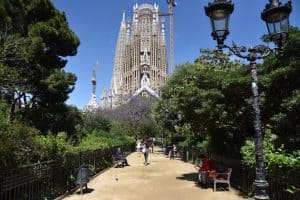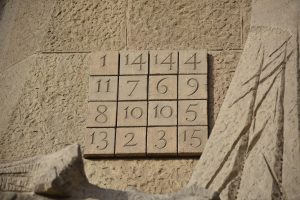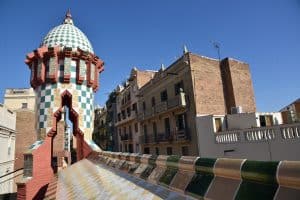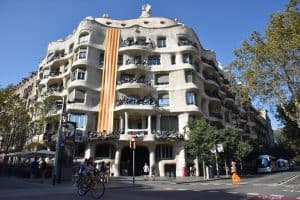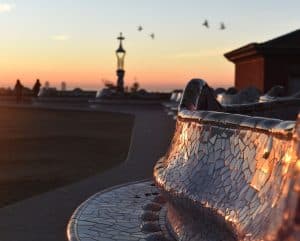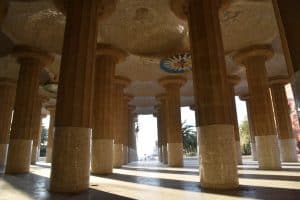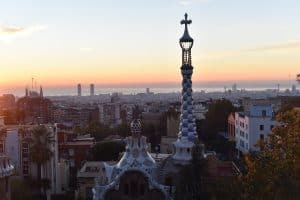Antoni Gaudí i Cornet (25 June 1852 – 10 June 1926) was a visionary Catalan architect, celebrated as the foremost exponent of Catalan Modernisme and one of the most influential figures in the history of architecture. His works are renowned for their distinctive, organic forms, vibrant colors, and innovative use of materials, drawing inspiration from nature, religion, and his deep-rooted Catalan identity.
Early Life and Education
Antoni Gaudí i Cornet was born in 1852 in Catalonia—either in the city of Reus or the nearby village of Riudoms, according to varying sources. He was the youngest of five children in a family of coppersmiths, and his father, Francesc Gaudí i Serra (1813–1906), played a significant role in shaping his early appreciation for materials and craftsmanship. The family lived in a farmhouse known as Mas de la Calderera in Riudoms. Gaudí’s delicate health from a young age led him to adopt a vegetarian lifestyle and spend much of his time observing nature, which would later become a recurring motif in his work. His artisanal upbringing and close connection to the natural world deeply influenced his architectural style, which often incorporated elements such as ceramics, wrought iron, and stained glass.
Gaudí studied architecture at the Llotja School and the Barcelona Higher School of Architecture, graduating in 1878. While he was a student, he made contributions to the waterfall designed Josep Fontsére in Parc de la Ciutadella. His own first projects were the lamposts in Plaça Reial and the Cooperativa Obrera Mataronense (Workers’ Cooperative of Mataró) building.
A pivotal moment in Gaudí’s life came when he was at the Paris World’s Fair of 1878, displaying a showcase he had produced for the glove manufacturer Comella. His work caught the eye of the Catalan industrialist Eusebi Güell, who went on to commission a number of important works. These include Bodegas Güell, the Güell pavilions, Palau Güell, Park Güell and the crypt of the church of the Colònia Güell.
Architectural Career
Gaudí quickly distinguished himself with his innovative ideas and unique aesthetic. His first major commission was Casa Vicens, marking the beginning of his Orientalist period and showcasing influences from Moorish, Egyptian, and Indian architecture. He soon became a central figure in the Modernista movement, which sought to revive Catalan culture and artistic expression.
Gaudí’s approach was defined by a deep religious symbolism, particularly evident in his later works, combined with a free-flowing, organic sense of form. He drew inspiration from nature both aesthetically and structurally, incorporating natural motifs and solutions into his designs. His work also integrated various crafts and innovative material techniques, most notably trencadís, a mosaic made from broken ceramic pieces.
Anything created by human beings is already in the great book of nature.
~ Antoni Gaudi
Major Works
Most of Gaudí’s masterpieces are located in Barcelona and include:
La Sagrada Família Gaudí’s most iconic and ambitious work, a monumental basilica that blends Gothic and Art Nouveau styles. Under construction since 1882, it remains unfinished, yet draws millions of visitors each year with its towering spires, intricate facades, and profound religious symbolism.
Casa Batlló Remodeled by Gaudí between 1904 and 1906, transforming it into a striking example of Modernisme with a façade decorated in colorful mosaics and organic, skeletal shapes that earned it the nickname “House of Bones.” The building features a roof resembling a dragon’s back, symbolizing the legend of Saint George.
Casa Milà A modernist landmark on Passeig de Gràcia completed in 1912. Its undulating stone facade and wrought-iron balconies evoke a natural, flowing form, while the rooftop chimneys resemble surreal sculptures, making it one of Barcelona’s most distinctive architectural works.
Park Güell Built between 1900 and 1914 and originally intended as a private residential estate for wealthy families, but later transformed into a municipal park when the housing project failed. The park is celebrated for its whimsical architecture, colorful mosaics, and organic forms inspired by nature.
Colònia Güell A pioneering 19th-century industrial village located in Santa Coloma de Cervelló, southwest of Barcelona, created by the industrialist Eusebi Güell to house his textile mill workers and improve their quality of life with amenities such as schools, shops, and gardens. The most famous feature is the crypt designed by Antoni Gaudí.
Casa Vicens Located in Gràcia, Casa Vicens is the first major building designed by Antoni Gaudí. Built between 1883 and 1885 as a summer residence for stockbroker Manuel Vicens, the house features a vibrant façade adorned with colorful ceramic tiles and intricate ironwork, blending Moorish, Oriental, and Neo-Mudéjar influences.
Palau Güell Designed by Antoni Gaudí for industrialist Eusebi Güell, Palau Güell is located near La Rambla in Barcelona’s Raval neighborhood. Completed in 1890, the mansion highlights Gaudí’s early genius in manipulating space and light, with features such as parabolic arches, elaborate ironwork, and a rooftop crowned with colorful chimneys.
Personal Life
Gaudí’s devout Catholic faith grew stronger throughout his life, profoundly influencing his work, especially the Sagrada Família, which he envisioned as a “stone Bible”. After 1910, he dedicated himself almost exclusively to this project, even residing on its construction site in his final years.
On 7 June 1926, Gaudí was struck by a tram in Barcelona and died three days later, largely unrecognized at first due to his modest appearance. His funeral was attended by thousands, and he was buried in the crypt of the Sagrada Família.
Recognition
Gaudí’s style was initially met with mixed reactions, but by the mid-20th century, he was celebrated worldwide for his originality and creativity. Seven of his works have been designated UNESCO World Heritage Sites. In 2025, Pope Francis declared him “Venerable,” advancing his cause for canonization in the Catholic Church.

